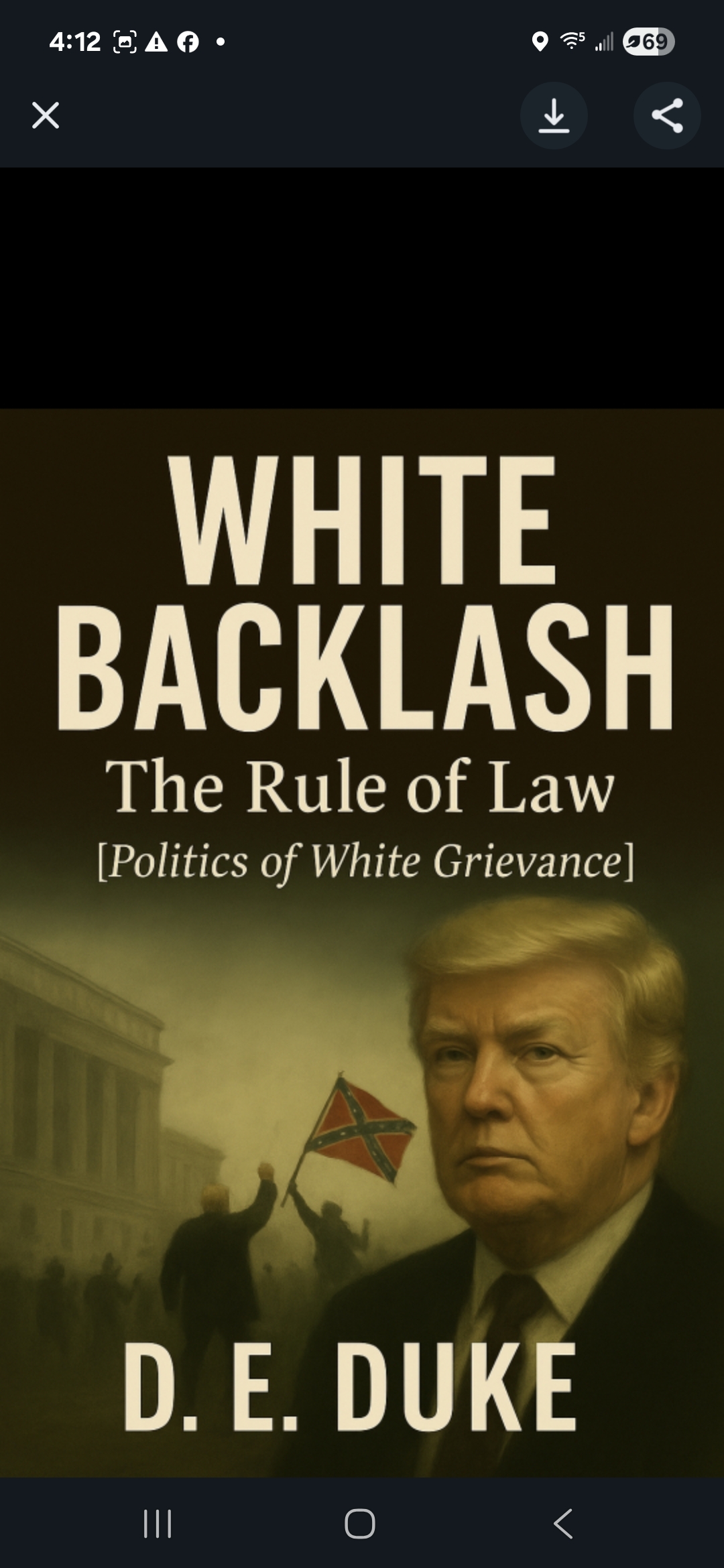
Understanding White Backlash: The Rule of Law
- D. E. Duke
- Oct 22
- 3 min read
Exploring the Complexities of Race and Identity
Historical Context of White Backlash
The book begins by examining the historical context of white backlash. It highlights how demographic shifts, particularly the increasing diversity in the United States, have led to feelings of insecurity among some white individuals. This insecurity often manifests as white grievance—a defensive response to perceived threats against white social status and cultural identity.
The author argues that this backlash is not a new phenomenon. Throughout history, there have been various instances where white communities have reacted strongly to changes in racial dynamics. Starting with Bacon's Rebellion, the English colonization of North America, the American Revolution, and the Civil War, the civil rights movement of the 1960s saw significant pushback from white individuals who felt their way of life was being challenged.
These historical perspectives are crucial for understanding the current climate. The book illustrates that white backlash is often fueled by fear and misunderstanding. Many individuals may not fully grasp the benefits of diversity or the importance of racial equity. Instead, they may view these changes as a direct threat to their privileges.
Psychological Factors at Play
One of the most compelling aspects of this book is its exploration of the psychological factors at play. The author discusses concepts such as the "psychological wage" of "whiteness" given to poor whites and social dominance orientation among various racial groups, including native tribes, Africans, Chinese, Mexicans, and Japanese. These ideas help explain why some individuals may react negatively to diversity initiatives or social justice movements.
For instance, when faced with policies aimed at promoting racial equity, some white individuals may feel that their own opportunities are being diminished. This perception can lead to resentment and a desire to push back against these changes. The book emphasizes how the system has never changed but has morphed and adapted to the changing times.
The Role of Media and Propaganda
The author also highlights the role of media and propaganda in shaping perceptions of race and identity. News outlets often focus on sensational stories that reinforce stereotypes, which can further entrench feelings of backlash. By presenting a narrow view of racial issues, the media can contribute to a cycle of misunderstanding and fear.
To combat this, the book suggests that understanding our true history is essential. Presenting historical facts and sharing them with people of color can help marginalized communities plan for the future. This dialogue can lead to greater understanding and, ultimately, a plan of action.
The Importance of Education
Another key insight from "White Backlash" is the importance of education. The author argues that increasing awareness about racial issues can help mitigate feelings of insecurity among white individuals. By providing accurate information and promoting critical thinking, society can challenge the narratives that fuel backlash.
For example, educational programs that focus on the history of race relations in America can help individuals understand the systemic nature of racism. This understanding can foster empathy and encourage individuals to support initiatives aimed at promoting equity.
Political Rhetoric and Its Impact
The book also discusses the impact of political rhetoric. Politicians often exploit fears around demographic changes to rally support. This can lead to divisive narratives that further entrench feelings of resentment among white communities.
By recognizing the power of language and messaging, advocates for social justice can work to counteract these narratives. We can begin to see the truth and prepare a plan that will benefit our interests.

Moving Forward with Empathy and Understanding
As we move forward, let us remember that the path to understanding is paved with empathy, education, and open dialogue. By embracing these principles, we can work towards a plan for a better life for future generations.
In conclusion, "White Backlash: The Rule of Law" serves as a significant and thought-provoking voice in the national conversation. It encourages readers to engage with the ideas presented and to reflect on their own perspectives regarding the politics of white grievance in America. By fostering a deeper understanding of these complex issues, we can contribute to a more informed and inclusive society.




Comments